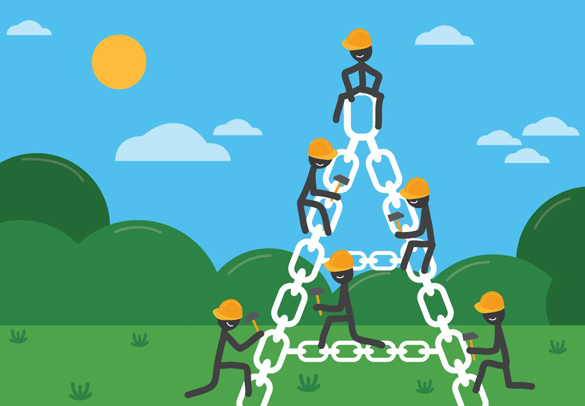Need a specialized, in-house team for building links? This article can help you build one. It contains the steps I took to assemble my link building team at SERPReach.
One hand is not enough when scaling link building or digital marketing as a whole. We all need a team. But how can you build one for your link building campaigns?
Who and what should you look out to improve your link building efforts?
At SERPReach, I had to build a team to deliver top-notch link building services to my clients without burnout. And my team is crushing it. We’re increasing organic traffic and rankings for clients with quality backlinks.
You can build a team to get similar results for your link building agency or business. I’ll show you how in this article in 3 detailed steps.
Take a sneak peek into what you’ll learn:
- Who needs a link building team?
- The models of building a link building team
- Who should be on your link building team?
- What qualities should you look out for?
- Where to hire the members of your team
Let’s dive in!
Do You Need an In-House Team for Link Building?
While link building is only a part of Search Engine Optimization (SEO), it is robust. You’ll do prospecting, vetting, and outreach for numerous campaigns. This can strain the quality of your links.
Hence, the reason for a link building team. However, you don’t necessarily need to build one. Really?
Yes.
You’ll only need a few links as a small or medium-sized business with little to no competition. Your sales or marketing team can get those from directories, guest posts and roundups.
In this case, you don’t need to build an in-house team. That might be too expensive and strenuous to manage as a small business. Instead, you can hire link builders as needed.
On the other hand, you need a team for link building if you:
- Need several and consistent links as an agency or a large-scale business in competitive niches and
- Have a plan and process for sustainable link building
After establishing your need for a link building team, decide the model to follow.
Models of Building a Team for Links: Types, Pros & Cons
There are two models:
- All-in-one marketer model
- Decentralized model
The All-In-One Marketer Model
This model means everyone on your team is a jack of all trades. In other words, each member will be tasked with writing content, finding prospects, and doing outreach.
In short, you will have a team of link builders who each work independently to generate backlinks for your clients or business.
Pros
- This model is 100% hands-off. These experienced link builders rarely require any supervision.
- There will be quick results since the link builders are gurus in their own right.
Cons
- A jack of all trades will likely be a master of none. The same thing applies to all-in-one marketers. They will likely perform better in certain parts of the link building process than the others. Unfortunately, this will affect the overall quality of your backlinks.
- The chances of synergy are slim with all-in-one marketers. Each cog will work without regard to the wheel. This is not the essence of teamwork.
- Often, the marketers will only use common tactics like broken link building and guest posting.
The Decentralized Model
This model is the complete opposite of all-in-one marketers. There is a need for different people for each part of your link building process here.
The idea is to build team members who depend on each other and deliver on the team goals. In the process, each will become specialized and get results done not only accurately & effectively but quickly.
Pros
- There is synergy among team members, and each will excel in their roles.
- Building a team using the decentralized model is often more affordable than all-in-one marketers.
Cons
- Coordinating people and getting them to work together can be challenging. If you don’t have “people skills,” the decentralized model is not for you.
- Unlike all-in-one marketers, you’ll actively train and retrain a decentralized model team. This might be hectic.
Which of the Two Models Should You Use?
Before I answer the question, let’s use Ahrefs content team as a case in point.
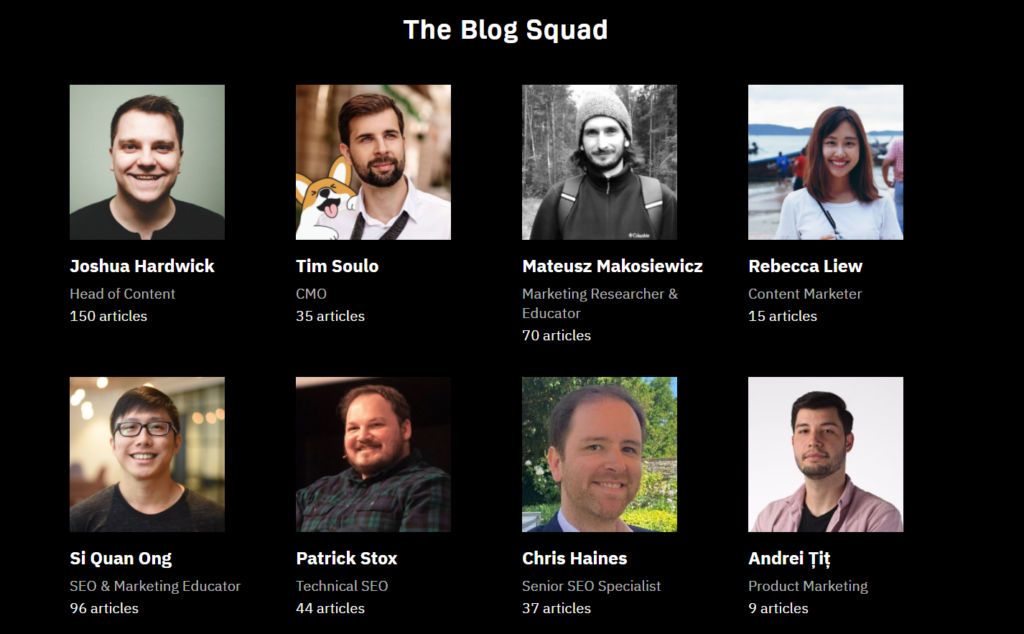
Ahrefs has 8 team members on its blog squad — not considering the graphic designers. Yet, they have Sam Oh for video content. Why?
The answer is simple: Ahrefs’ content team has different expertise, and they best deliver when used in their area of specialization.
The same principle applies to link building.
Plus, if we are being frank with ourselves, no one wants to do everything. It will be too overwhelming.
Going with that premise, the best model for assembling any marketing team is “the decentralized model.”
That is what I used to build the team at SERPReach.
But what if you don’t have the time for the folks on your team?
There is a way around it. I’ll show you the steps I followed when assembling my link building team.
How to Assembly a Decentralized Link Building Team in 3 Steps
Here’s a quick overview of the steps:
- Decide who needs to be on your team
- Create SOPs for your link building strategies & processes
- Hire the team and train them
Decide Who Needs to Be On Your Team
On average, link building teams have 5 members:
- The prospectors
- The vetters
- The email finders
- The outreach managers
- The account or project managers
Hiring all 5 can be expensive. Instead, you can collapse the roles and hire only 3 — this is what I did.
My link building team comprises a prospector, vetter, and outreach manager.
Pro tip:
Hire email finders and project managers as needed when your agency/business grows. Then, you’ll need more hands to ease the workload on your team.
That said, let’s explain the role of each member of a 3-member team.
Prospector
The primary role of a prospector is to find link building prospects. S/he will work with your content and design/dev team to know your linkable assets.
Based on the assets, the prospector will find prospects by studying the patterns of competitors’ backlinks. S/he will then compile the list on a Google Sheet.
Other roles:
Often, prospectors can also act as your account/project manager. They have an SEO background. Plus, they compiled the prospects and know all the touchpoints & your content. That puts them in the best position to manage your accounts.
Vetter
A vetter primary role is to ensure quality assurance. S/he will collect the data from the prospector link profile and review it for your standards. Your standards could be about domain authority or rankings on search engine results pages. A vetter will note all that.
Also, vetters will further qualify our prospects into:
- Seed prospects — are your target websites; these are the pages that will likely link back to your website because of your assets
- Lookalike prospects — sites discussing similar content around the theme of your seed prospects
The qualification process will help other team members prioritize which prospects to focus on the Google Sheet.
Other roles:
Vetters are in the best position to find prospects’ email addresses (contact details). You could include the role in their job descriptions until you could afford a dedicated email finder.
Outreach Manager
Outreach managers are like the sales reps of the team. They are responsible for first writing emails (pitching) to relevant sites. Then, they will templatize the messages to automate the process of future outreach campaigns.
More importantly, outreach managers maintain working relationships with the target sites. They will build the relationships from the start and nurture them continually.
Other roles:
Outreach managers have strong people skills, and they are organized. Because of these qualities, they can fit in as project managers till you can hire dedicated managers.
Note: no role is more important than the other. If the prospector starts the process the wrong way. The quality of your backlinks will be affected. You might even end up with irrelevant, poor-quality links.
Vetters and outreach managers are just as important. They ensure quality standards and maintain relationships with linking pages.
Create SOPs for Your Link Building Strategies & Processes
The bulk of the work with assembling a decentralized team is with onboarding — especially training. You have to walk each unit through the know-how and tools of your process.
Unfortunately, you might have to do this continually.
But there is a way out: create SOPs (Standard Operating Procedures)…
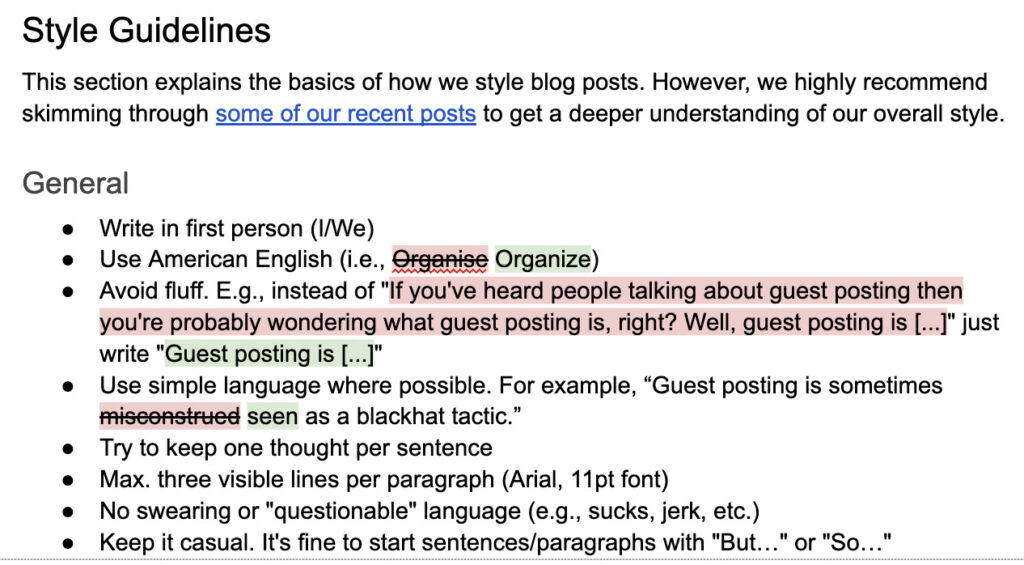
In other words, create a document like the above that explains your process as you do it. When you have one, training for new hires will be seamless.
My take:
Instead of text SOPs, use video SOPs. At SERPReach, for example, I record my screen as I fulfill each step of the process. While at it, I explain the whys, whats, and hows.
This reduces the stress of questions or misunderstandings.
That said, what should be on your link building SOP?
There is no standard. But your SOP should include these 3 components:
- The prospecting process
- The vetting process
- The outreach process
Note: include the link building software used for each of the stages.
Prospecting
For prospectors: ensure your SOP contains the points below.
- How to explore top link building opportunities and find prospects
- How to use Ahrefs/Semrush to study patterns of competitors’ backlinks
- Show what makes a trend a prospect and add the one that makes the cut to Google Sheet
My take:
Focus more on what a prospect is not. For example, I checked the source of my 5 top organic competitors’ backlinks.
The domain “heavenarticle” pops up. But the referring page & anchors are wrong and irrelevant. So, I checked one of the referring pages. I found this:

I looked further and saw this:

By all standards, this domain looks like a link farm. It can never be a prospect for the high-quality links we are known for at SERPReach.
Vetting
For vetters: ensure your SOP contains the points below.
- How to differentiate “seed prospects” from “lookalike prospects” with Ahrefs/Semrush
- How to vet prospects based on your in-house criteria
- How to use tools like Hunter.io and GetProspect to find email addresses
My process:
My SOP includes using “anchor” and “content explorer” for vetting. I teach my vetter to use the former to confirm seed prospects.
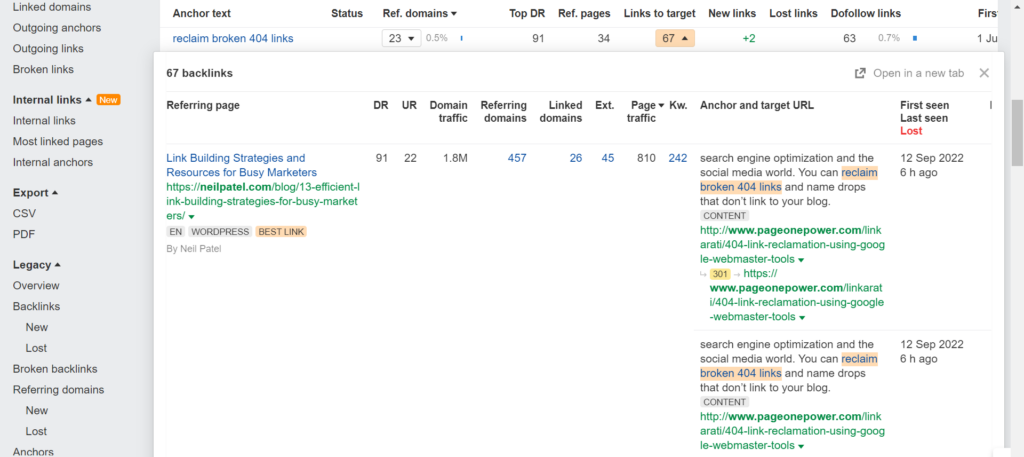
The content explorer is for vetting lookalike prospects.

The SOP also includes using GetProspect to find prospects’ email addresses.
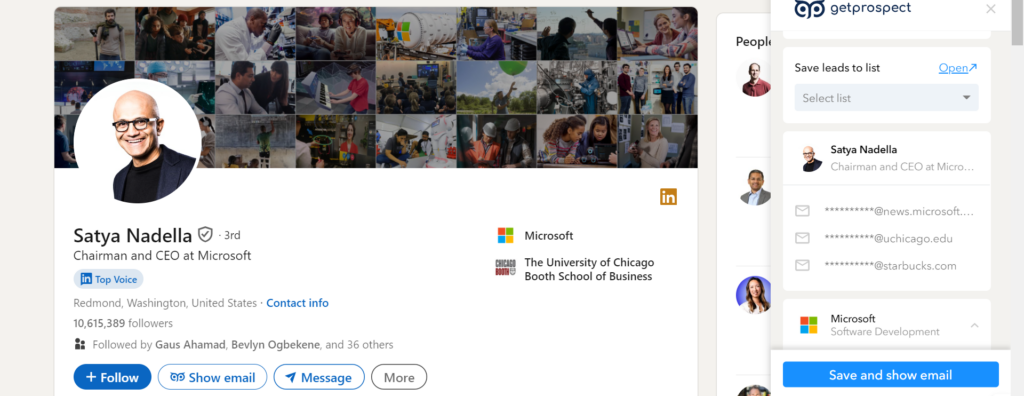
Note:
Don’t be limited to the tools I mentioned. Try other ones. Try Voila Norbert, as an example, for finding emails. According to Ahrefs, it has better accuracy than GetProspect and even Hunter.io.
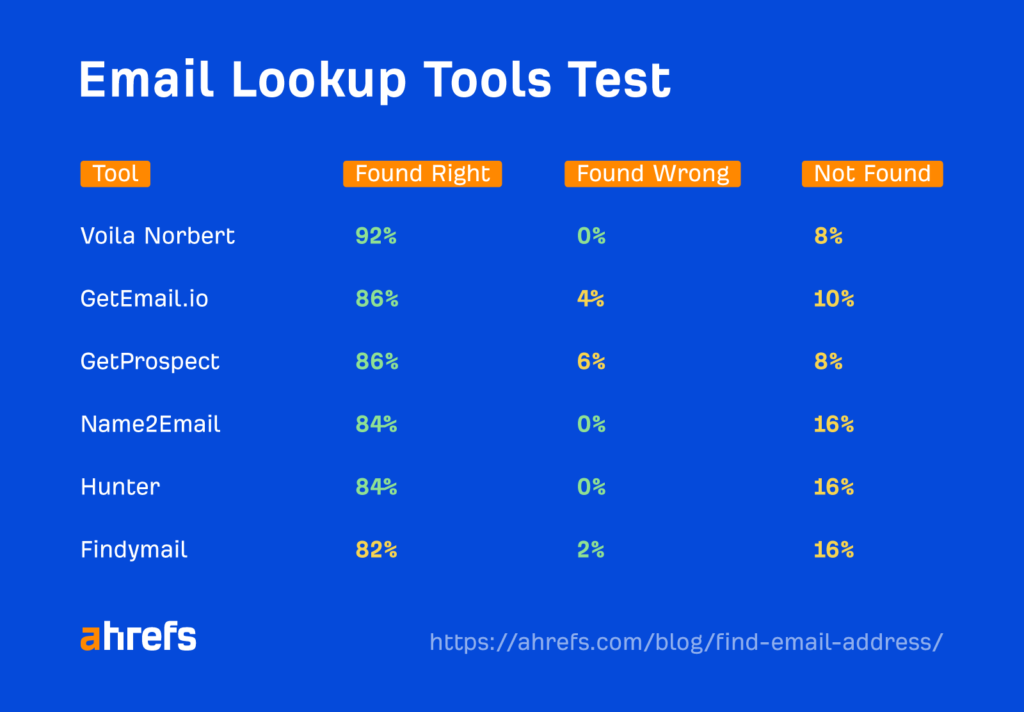
Outreach
For outreach managers: ensure your SOP contains the points below.
- How to craft a personalized outreach
- How to templatize emails
- Coordinating the team with project management tools like Trello, ClickUp, and Google Workspace.
Which tools do I use?
I prefer Google Workspace and Trello. Google Sheets, in particular, is a hidden gem for managing workflow.

Then, I work around other email automation tools like MailChimp and Respona.
Hire the Team and Train Them
With the SOPs already at hand, proceed to hiring your team. Then, you can use the SOPs to train them.
But what should you look out for? More importantly, where will you find the right talent?
What to Look Out for When Hiring for Your Link Building Team
Let’s discuss the skill sets required for each of the roles.
Prospectors
A prospector must have a solid grasp of SEO. This is non-negotiable as they lay the foundation of your process.
Also, prospectors must be analytical thinkers with top-notch research skills. They will need such a skillset to study the pattern of your competitors.
Vetters
Unlike prospectors, vetters don’t necessarily need SEO experience. Rather than looking for SEO “gurus,” hire candidates with quality control backgrounds. Such a person will pay keen attention to detail and follow your instructions to the letter.
Outreach Managers
Outreach managers do not need SEO expertise. Instead, focus on candidates with copywriting skills — better if they were in marketing or sales. In short, hire people with persuasive skills.
Furthermore, an outreach manager must be good with people and highly creative.
Where to Find the Right Candidate for Your Team
When assembling your team, seek talent from these 3 channels:
- Freelance marketplace — look for sellers with specific offers. For example, if I’m looking for a vetter, this email finder on Upwork will be a great candidate:
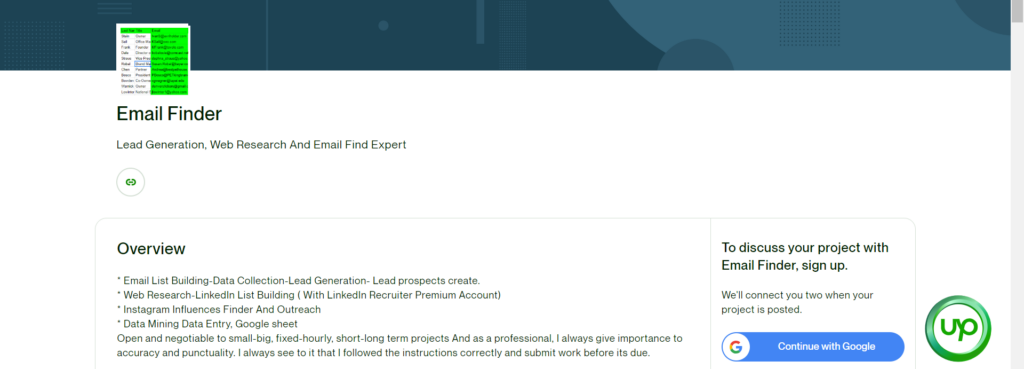
- Ask from friends and partners — ask trusted people in your circle who they use. This works the best for me.
- Create job openings on sites like Indeed and LinkedIn.
Alas, you have a team after your heart. Go crush your organic search rankings and overall SEO performance.
Key Takeaways
📌 Not everyone needs a link building team.
📌 The best model to build a team is to hire different people for each part of your process.
📌 The success of your team depends on your SOPs and training
📌 Hire the best people based on qualifications and skill set. But don’t be restricted. The best talents don’t necessarily have link building experience or have advanced knowledge of how search engines work.
📌 Hire more specialized roles as the need arises to save money.
